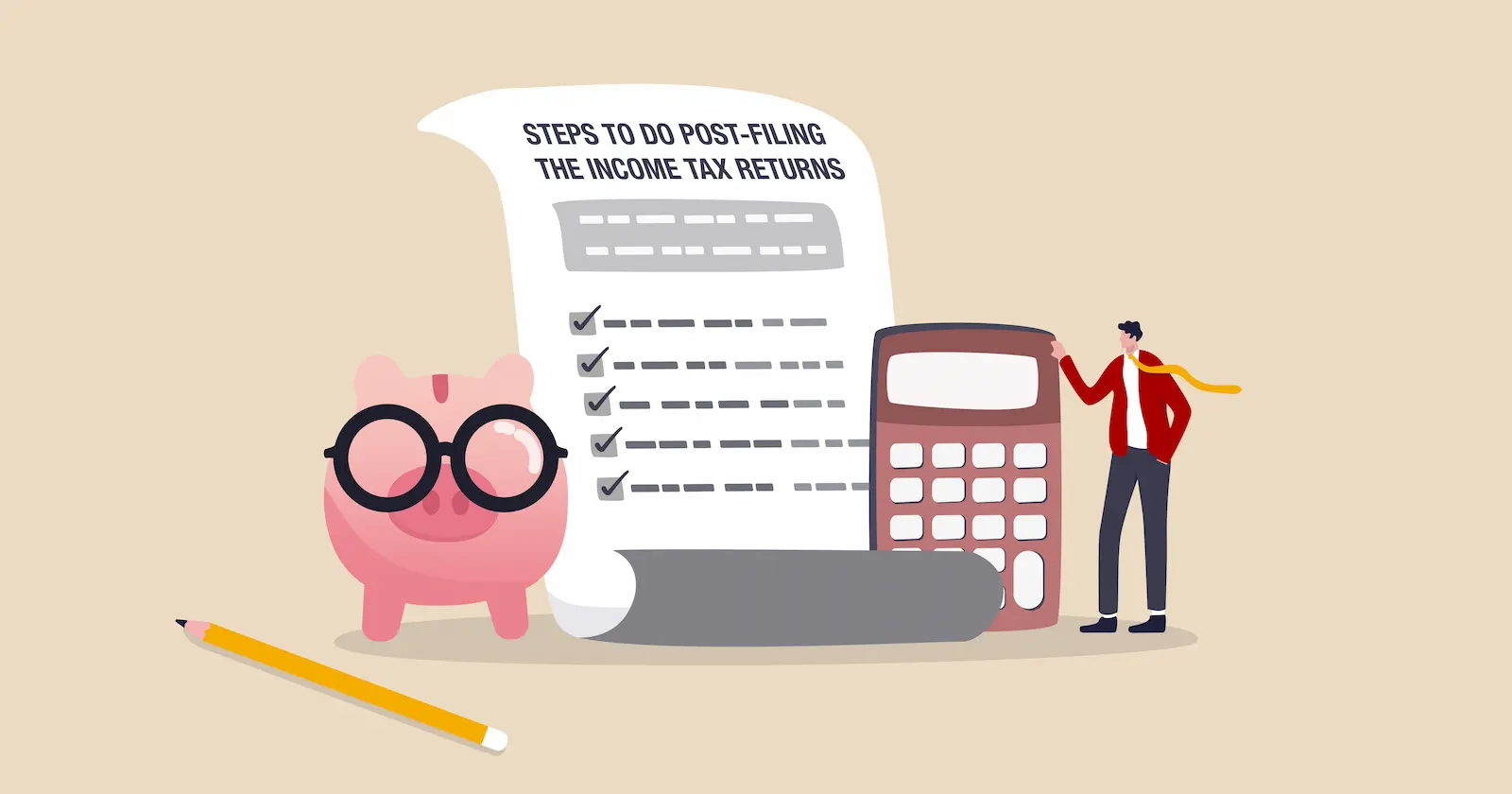Individuals must file their Income Tax Returns (ITR) on time, according to their tax liability. To apply for a loan, a credit card, and to get VISA approval for an overseas location, one must file ITR returns.
Not filing an ITR may also result in notices from the Income Tax Department as well as the following severe consequences.
As a result of the government digitalizing ITRs, the entire process is more convenient and faster. Furthermore, e-filing has resulted in enhanced confidentiality and better access to one's past tax records along with ease of use.
Suggested Read: How to File Income Tax Return – A Step by Step Guide
The fact remains that your tax liabilities do not end after filing your income tax returns. A few more steps need to be taken before the entire process can be considered successful.
Steps to Be Taken Post Filing of the ITRs
Here is a list of the steps post filing of ITR:
Step 1 - Acknowledgement
The income tax department generates acknowledgment known as ITR-V. This is sent to the email address provided by the individual tax-payer. The department usually mails ITR-V in two or three days. If one does not receive the document, it can be downloaded from the e-filing website. Once you submit the details, the ITR-V form would be available.
Step 2 - Sign and Submit the ITR-V form/ E-verify Your Filed ITR
Upon downloading and printing the form, you must sign it and send it to the Central Processing Centre of the income tax department in Bangalore. The form must be posted within 120 days of submitting your ITR. Alternatively, for instant e-verification, you can use the Electronic Verification Code (EVC) through your net banking, bank account, Demat account, ATM, email address/mobile number, or Aadhar card. With the recent amendment, the time limit for e-verification or submission of your ITR has been reduced to 30 days from the date of filing the return of Income.
To ensure that the tax department can process your filed returns, you need to verify the returns. If you do not verify, the return will be deemed invalid by the department.
Step 3 - The Return(s) is Processed by the Income Tax Department
Upon successful verification of the income tax return(s), the Income Tax Department notifies the individual taxpayer. In the intimation (notification), generated under Section 143 (1) of the Income Tax Act, 1961, the department analyzes the details in the ITR in relation to the department's demand. Upon calculating the demand based on the filed returns, the department communicates with the taxpayer in three different ways:
- No Demand. No Refund - This notification means that neither any further interest nor tax will be owed by the individual, nor will the department be able to return any excess taxes paid. It also means that the individual has no further tax responsibilities for the particular financial year.
- Refund Payable - The tax-payer may have paid more tax than the actual tax liability due to advance tax or deduction at source, resulting in a refund due. In such cases, the department initiates the process for a refund. The refund is usually credited directly to the individual’s bank account.
- Demand Determined - In this situation, the department informs the taxpayer that a specific amount of tax or interest is still owed. You must pay the tax demand within the prescribed time frame. You may request rectification if needed.
Step 4 - Secure Your Income Tax Documents for Future Use
Once you have completed your Income Tax Filing, it is important to keep all income tax-related records in a secure place. The Income Tax Department can ask for previous year’s documents in certain cases, therefore it’s advisable to maintain documents for a reasonable period of time. Some of the documents that needs to be secured for future use:
- Form 16 and Form 12B
- A copy of the tax payment challan
- TDS (Tax Deducted at Source), Form 16A
- Non-taxable (Tax Exempt) documents
- Bank Account Statements
- Gifts deeds
Step 5 - Boost Your Savings by Minimizing Your Taxes
Are you aware?
For most people, taxes account for 20-30% of an individual's income. The taxes you pay contribute between 20-30% of your earnings, so you cannot ignore them when making savings plans. At times, all you need is a multi-year comprehensive plan to reduce your tax burden.
You can schedule an appointment with our financial experts to learn where you can save on taxes while boosting your savings.



Comments